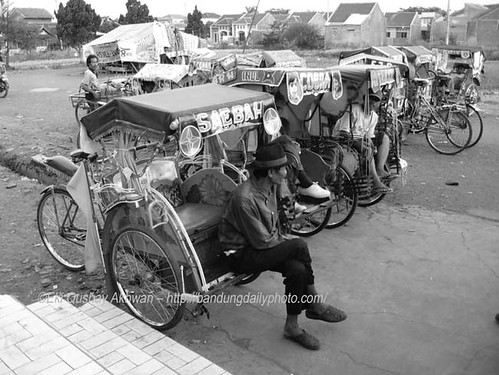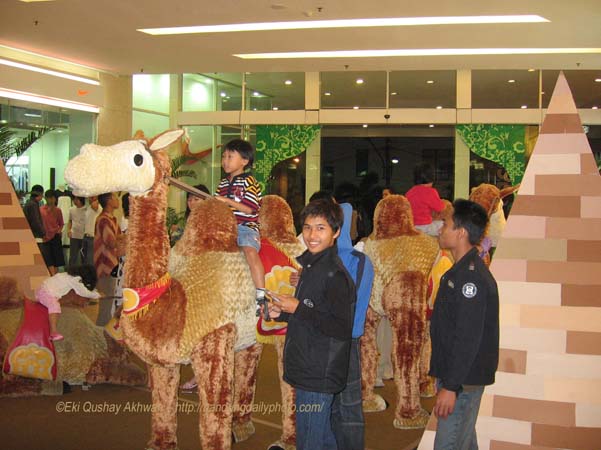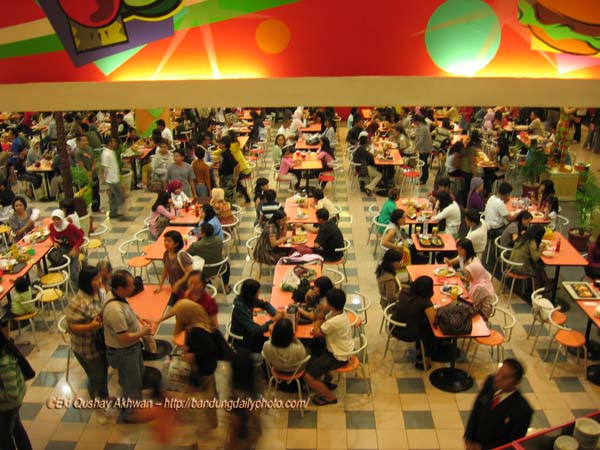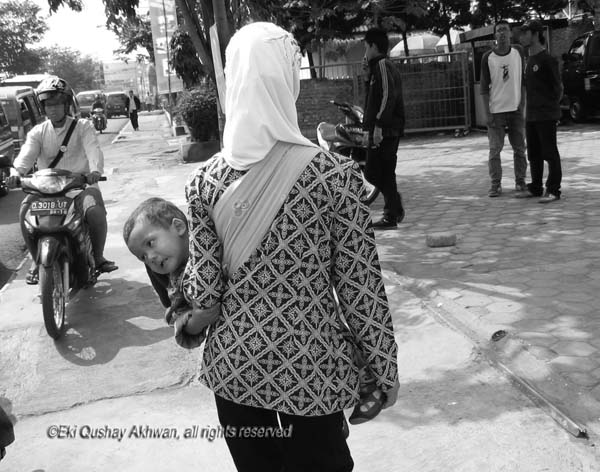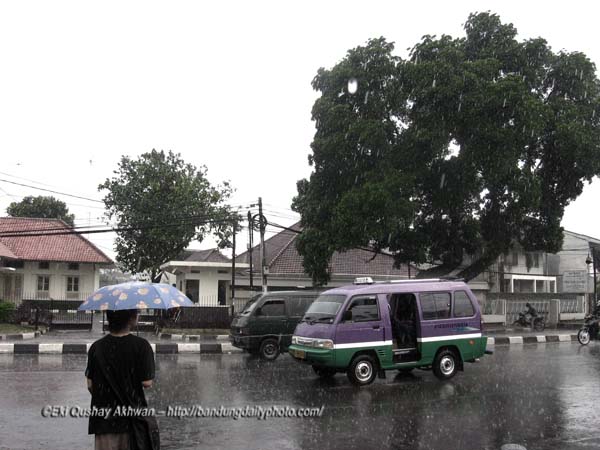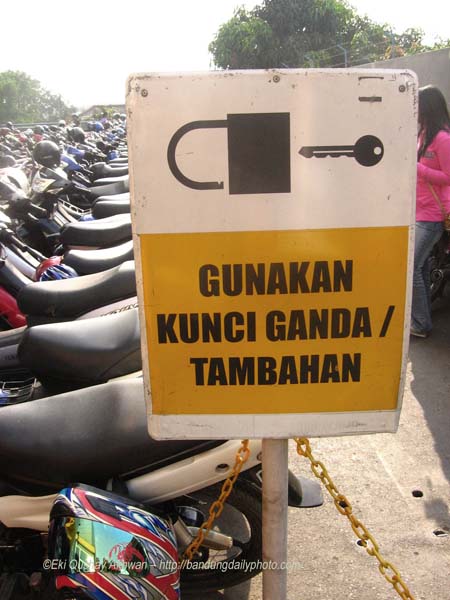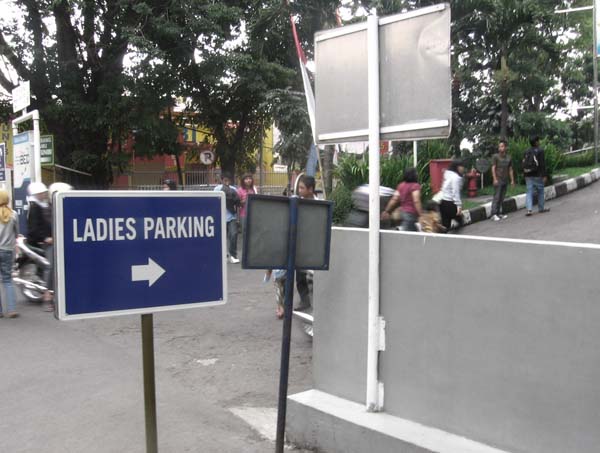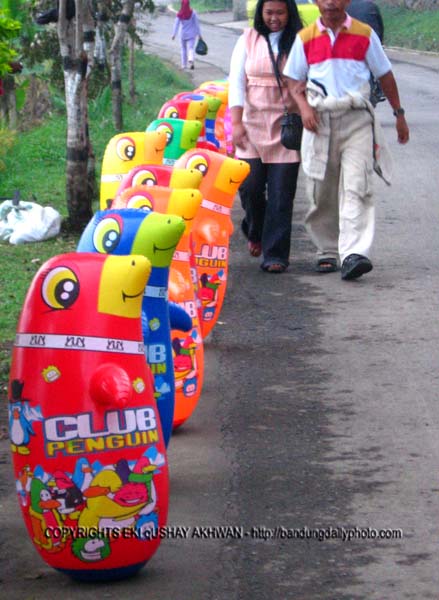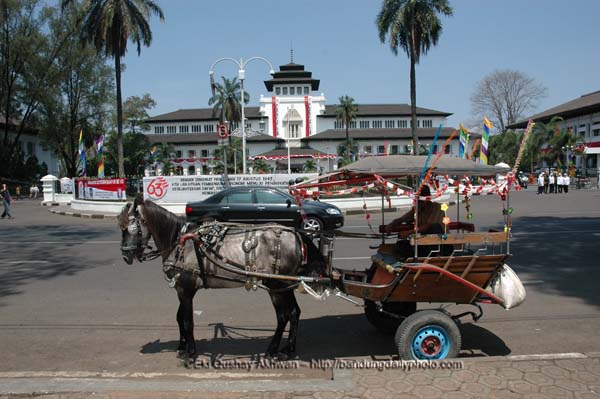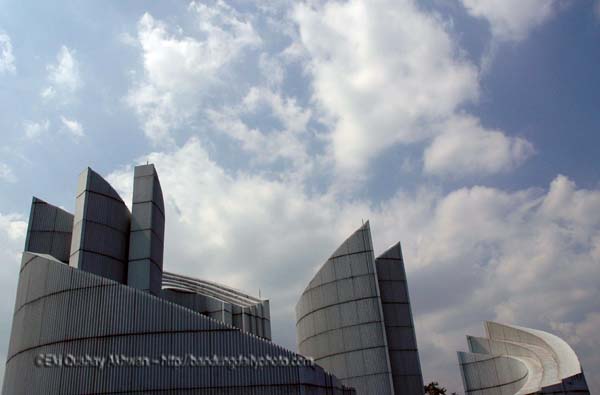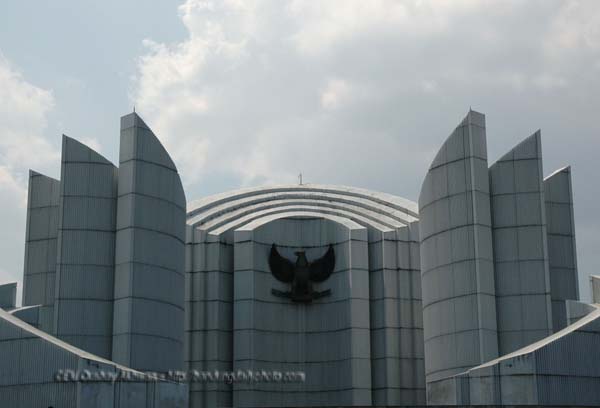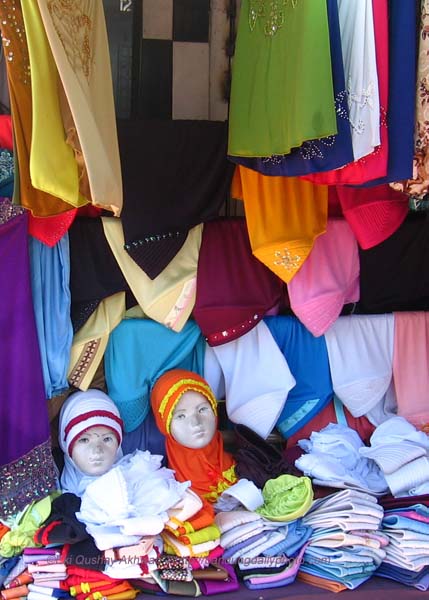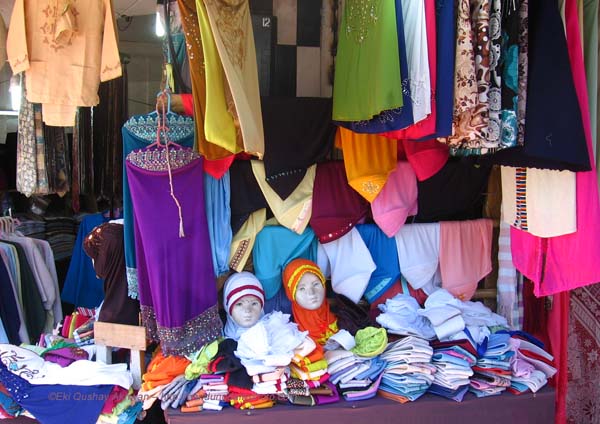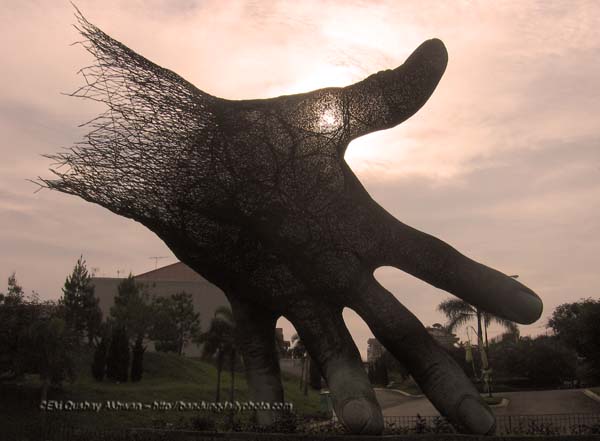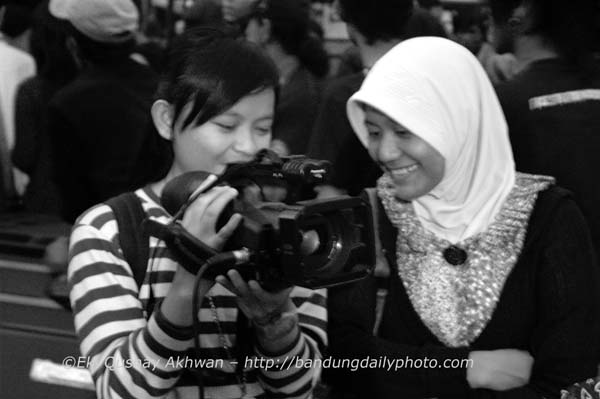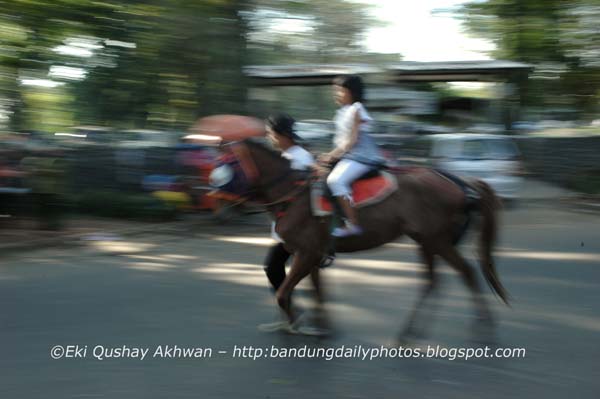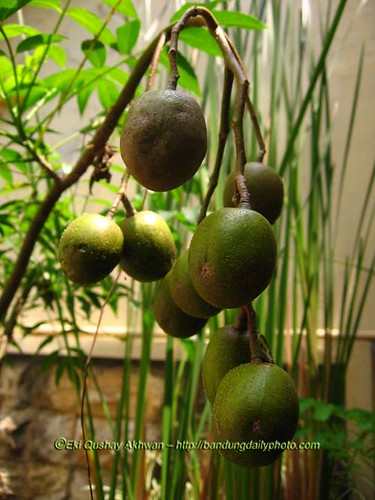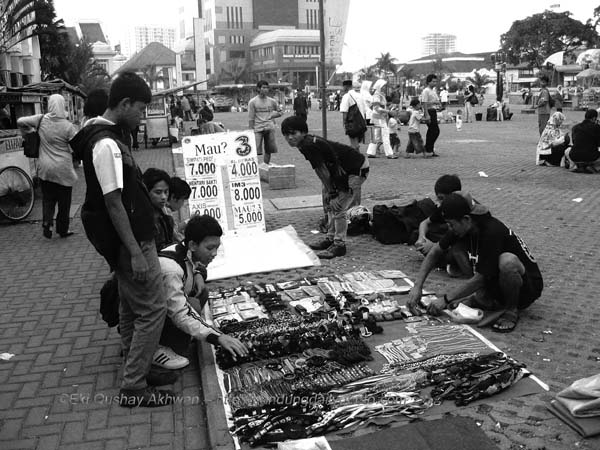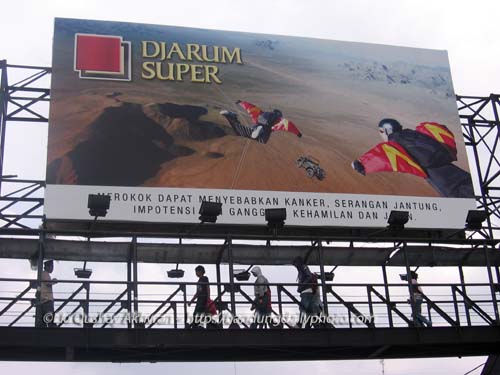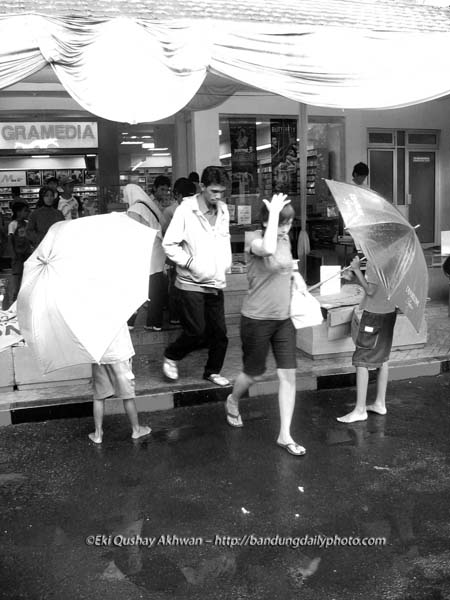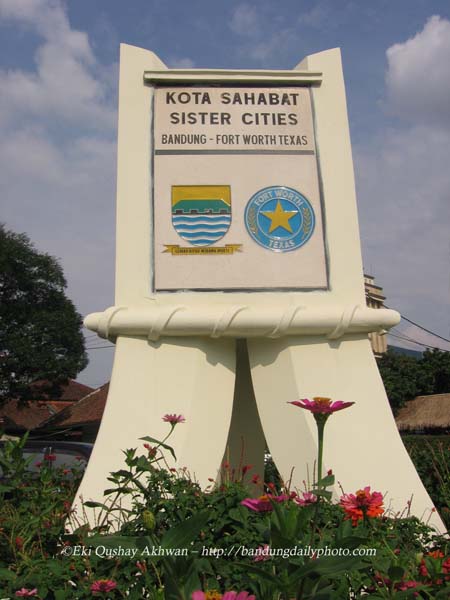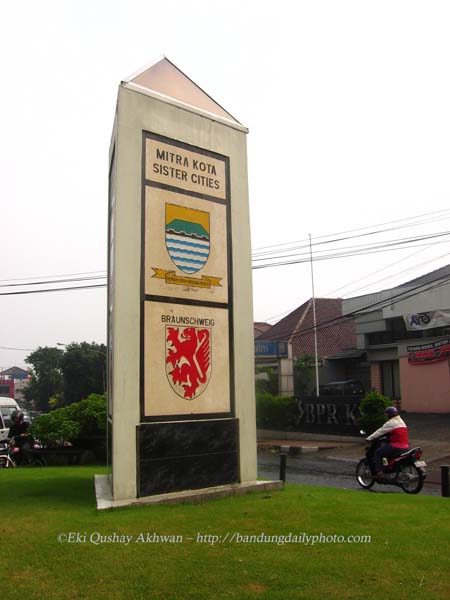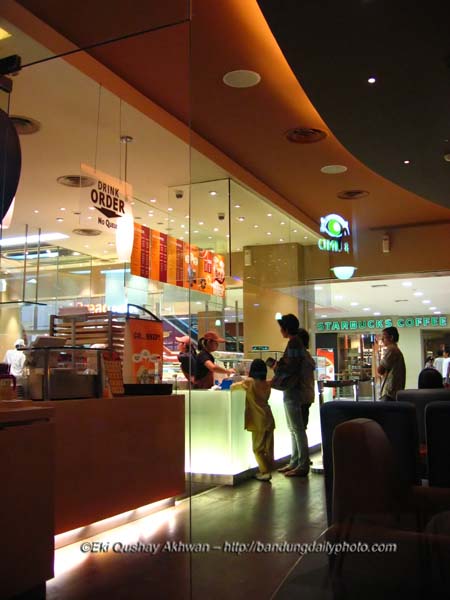 Text and pictures by Eki Qushay Akhwan
Text and pictures by Eki Qushay AkhwanDonut has never actually been my favorite kind of food. I mean it's good and it's good to have it every once in a while, but I never really care much about it, much less crave for it. And here's the story about the donut.
A couple of days ago I needed to go for a little shopping. So on the way home from work, I stopped by Ciwalk (Cihampelas Walk), a mall (open arcade?) set in the middle of lush and beautiful gardens in Bandung's Cihampelas street. It's the fasting month of
Ramadan, and like any other good Moslems, I was fasting. When I was done with the shopping, it was almost 6, the time for
iftar (the breaking of the fast). Most restaurants and cafes seemed to be packed with queuers. J.CO was one of those that didn't seem to be crowded. So there I was, ordering coffee and doughnut for iftar. It's not my kind of idea for breaking the fast, but heck, I didn't want to wait in a long queue just for a light meal and drink.
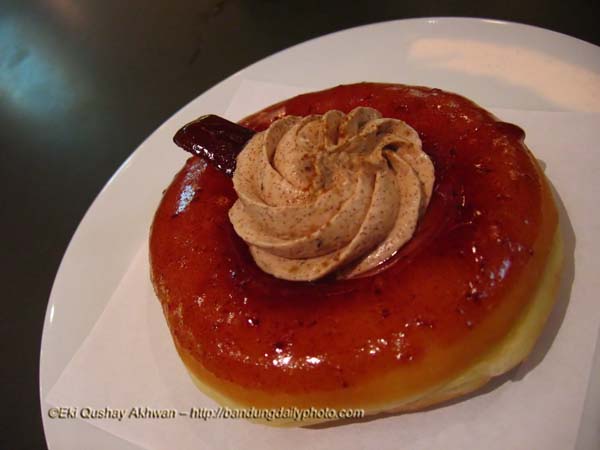
And here is what I had: Dates O'Yummy donut and a cup of iced dates cappuchino.The donut was okay, but the added dates ingredient was great. I liked it a lot, and I think I'd love to have it again sometime. (I don't know though if it's going to be offered outside Ramadan. Dates = Ramadan here.) ;)

J.CO is an Indonesian bakery retailer specializing in donuts and coffee. Considering that it's been established only recently (2005), it's a quite a success story. Its fast-gained popularity, I think, has much to do with its fluffy and light donuts which, I think, is much preferred than the American predecessors which had much earlier presence here. The parlor's chick-looking, cozy design and pricing factor, especially for the coffee, may also contribute some to its success. You can see in the top photo the quiter Starbucks is just across the window. Starbucks coffee is still considered a bit too expensive for many Indonesians as their pricing is globally standardized (the price of a cup of coffee here is about the same price you'd pay in New York, Hong Kong or any other places in the world).
In less than 3 years since its establishment, J.CO has had more than 30 outlets in 9 major Indonesian cities, and 8 in Singapore and Malaysia. The Philippines is next in its global expansion plan.
According to its website, J.CO is owned by Johnny Andrean Group of companies. Johnny Andrean himself, if I remember it correctly, started his business ventures in beauty salons chains. I don't know what beauty salon has to do with donut and coffee, but success is success.
Now that I've written this free advertisement for J.CO, I hope next time I go there, I'd get free coffee and donuts. I hope. ;)
All photographs were taken with my 3.2 megapixel, point and shoot Canon Powershot A510 camera.
